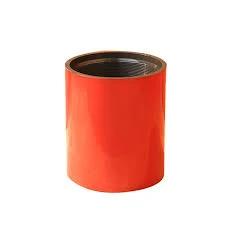- Afrikaans
- Albanian
- Amharic
- Arabic
- Armenian
- Azerbaijani
- Basque
- Belarusian
- Bengali
- Bosnian
- Bulgarian
- Catalan
- Cebuano
- Corsican
- Croatian
- Czech
- Danish
- Dutch
- English
- Esperanto
- Estonian
- Finnish
- French
- Frisian
- Galician
- Georgian
- German
- Greek
- Gujarati
- Haitian Creole
- hausa
- hawaiian
- Hebrew
- Hindi
- Miao
- Hungarian
- Icelandic
- igbo
- Indonesian
- irish
- Italian
- Japanese
- Javanese
- Kannada
- kazakh
- Khmer
- Rwandese
- Korean
- Kurdish
- Kyrgyz
- Lao
- Latin
- Latvian
- Lithuanian
- Luxembourgish
- Macedonian
- Malgashi
- Malay
- Malayalam
- Maltese
- Maori
- Marathi
- Mongolian
- Myanmar
- Nepali
- Norwegian
- Norwegian
- Occitan
- Pashto
- Persian
- Polish
- Portuguese
- Punjabi
- Romanian
- Russian
- Samoan
- Scottish Gaelic
- Serbian
- Sesotho
- Shona
- Sindhi
- Sinhala
- Slovak
- Slovenian
- Somali
- Spanish
- Sundanese
- Swahili
- Swedish
- Tagalog
- Tajik
- Tamil
- Tatar
- Telugu
- Thai
- Turkish
- Turkmen
- Ukrainian
- Urdu
- Uighur
- Uzbek
- Vietnamese
- Welsh
- Bantu
- Yiddish
- Yoruba
- Zulu
Durable Stainless Steel Pipe Couplings for Secure Connections and Enhanced Performance
Understanding Stainless Steel Pipe Couplings An Essential Component in Piping Systems
Stainless steel pipe couplings are vital components in various industrial applications, providing a reliable means of connecting two sections of pipe. The versatility and durability of stainless steel make it a preferred choice among engineers and designers, especially in environments where strength and corrosion resistance are paramount.
What are Pipe Couplings?
Pipe couplings are fittings used to join two pieces of pipe, allowing for easier assembly and disassembly of piping systems. They play a crucial role in ensuring that the flow of fluids or gases remains uninterrupted. There are several types of couplings, including threaded, welded, and slip-on varieties, each suited for different applications and pipe materials.
The Advantages of Stainless Steel
Stainless steel is an alloy known for its resistance to rust, corrosion, and high temperatures. This unique combination of properties makes stainless steel ideal for pipe couplings in a range of industries, including chemical processing, oil and gas, food and beverage, and water treatment.
1. Corrosion Resistance One of the standout features of stainless steel is its ability to withstand harsh environmental conditions. Unlike other metals, stainless steel does not easily corrode, which is critical in applications where chemicals or moisture could cause significant damage.
2. Strength and Durability Stainless steel pipe couplings are robust and can withstand high pressures and temperatures. This strength ensures that the couplings can handle dynamic loads, making them suitable for high-stress environments.
3. Aesthetic Appeal While functionality is the primary concern, the polished finish of stainless steel couplings also offers an aesthetic advantage. This makes them suitable for visible installations in buildings and facilities where appearance matters.
stainless pipe coupling

Types of Stainless Steel Pipe Couplings
1. Threaded Couplings These couplings feature internal threads that allow for easy connection to threaded pipe ends. They are simple to install and remove, making them ideal for temporary setups or systems requiring frequent maintenance.
2. Welded Couplings Welded couplings offer a permanent connection between pipes, providing maximum strength and leak resistance. They are generally used in applications where durability is critical.
3. Slip-On Couplings This type is designed to slide over the ends of pipes and is typically secured with welds or screws. Slip-on couplings are easy to install and offer good flexibility in various alignment scenarios.
Application Areas
Stainless steel pipe couplings are used across multiple sectors due to their versatility. In the food and beverage industry, for instance, they help maintain hygiene and prevent contamination. In the oil and gas sector, where exposure to corrosive substances is common, these couplings ensure safe and efficient transportation of materials.
Additionally, in HVAC systems, stainless steel couplings are integral for connecting ductwork and piping, thereby enhancing airflow and efficiency. The pharmaceutical industry also relies on these couplings for sterile processing environments, where any compromise could lead to product contamination.
Conclusion
In conclusion, stainless steel pipe couplings are indispensable components in modern piping systems. Their ability to resist corrosion, coupled with their strength and durability, positions them as a top choice for a wide range of applications. As industries continue to prioritize efficiency, safety, and longevity, the demand for high-quality stainless steel fittings, including pipe couplings, is expected to grow. Investing in these reliable connectors ensures that piping systems remain safe and functional, ultimately contributing to the efficiency and success of various industrial operations. Whether for construction, maintenance, or upgrades, understanding the role and benefits of stainless steel pipe couplings is essential for anyone involved in piping design and implementation.
-
Tubing Pup Joints: Essential Components for Oil and Gas OperationsNewsJul.10,2025
-
Pup Joints: Essential Components for Reliable Drilling OperationsNewsJul.10,2025
-
Pipe Couplings: Connecting Your World EfficientlyNewsJul.10,2025
-
Mastering Oilfield Operations with Quality Tubing and CasingNewsJul.10,2025
-
High-Quality Casing Couplings for Every NeedNewsJul.10,2025
-
Boost Your Drilling Efficiency with Premium Crossover Tools & Seating NipplesNewsJul.10,2025







